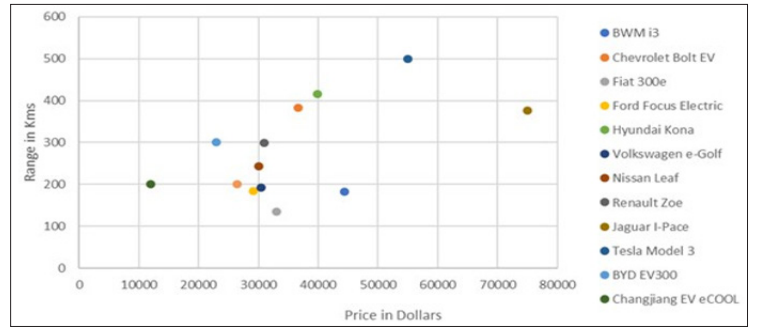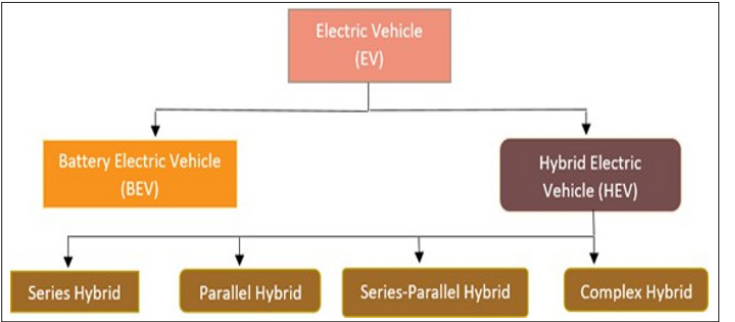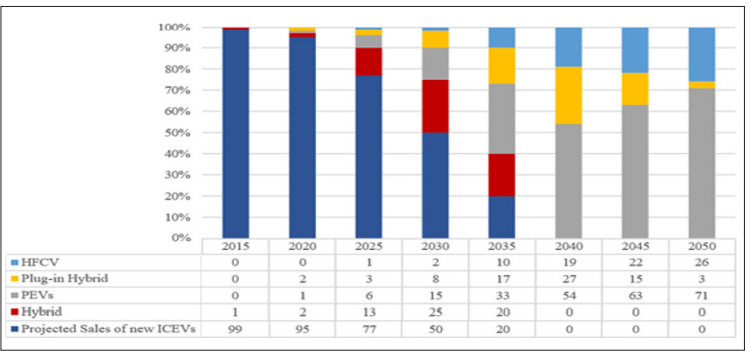Author(s): Vinay Nagarad Dasavandi Krishnamurthy
In the contemporary pursuit of sustainable transportation solutions, Electric Vehicles (EVs) and Fuel Cell Vehicles (FCVs) stand at the forefront, each offering distinct pathways towards a greener future. EVs, propelled by rechargeable batteries, have garnered significant traction owing to their zero-emission operation and integration with an increasingly renewable energy grid. Conversely, FCVs harness the power of hydrogen fuel cells to generate electricity, emitting only water vapor as exhaust, promising rapid refueling and extended driving ranges. This abstract traverses the intricate landscape of EVs and FCVs, scrutinizing their environmental footprints, infrastructure demands, technological progressions, and market penetrations. Through this comparative analysis, it endeavors to illuminate the diverging routes available on the energy highway, guiding stakeholders toward informed decisions in the pursuit of sustainable mobility solutions.
The automotive industry stands at a critical juncture, grappling with the imperative to transition toward sustainable transportation solutions amidst growing environmental concerns. At the forefront of this transition are Electric Vehicles (EVs) and Fuel Cell technology, representing two distinct paths toward reducing emissions and dependency on fossil fuels [1]. EVs have gained significant traction in recent years, propelled by advancements in battery technology and increasing consumer demand for cleaner transportation options. On the other hand, Fuel Cell vehicles, powered by hydrogen, offer an alternative approach with the potential for longer ranges and quicker refueling times. This paper examines the Electric Vehicles vs. Fuel Cell Vehicles between these two technologies within the automotive industry, exploring their respective advantages, challenges, and implications for the future of transportation [2]. By delving into this clash of technologies, we aim to shed light on the complexities and dynamics shaping the automotive landscape as it navigates toward a more sustain- able and environmentally responsible future. The automotive industry is undergoing a profound transformation driven by increasing concerns over environmental sustainability, climate change, and the need to reduce greenhouse gas emissions [3]. This transition towards sustainable transportation encompasses a broad spectrum of initiatives and innovations aimed at reducing the environmental footprint of vehicles while meeting the evolving needs of consumers and society. Key drivers of this transition include stringent emissions regulations, techno- logical advancements, shifting consumer preferences towards eco-friendly options, and growing awareness of the environmental impacts of traditional fossil fuel-powered vehicles. Automakers worldwide are investing heavily in research and development to develop cleaner, more efficient propulsion technologies that can replace or complement conventional internal combustion engines. Electric Vehicles (EVs) have emerged as a leading contender in this transition, offering zero-emission transportation powered by electricity stored in batteries [4]. EVs have seen significant advancements in recent years, with improvements in battery technology leading to longer ranges, faster charging times, and increased afford- ability. Additionally, governments and regulatory bodies are providing incentives and subsidies to encourage the adoption of EVs and accelerate the transition towards electrification. Moreover, advancements in connected and autonomous vehicle technologies are expected to further optimize energy efficiency and reduce emissions by improving traffic flow and reducing vehicle idling. Overall, the transition towards sustainable transportation represents a monumental shift for the automotive industry, requiring collaboration and innovation across the entire value chain. While challenges remain, the momentum towards cleaner, greener mobility solutions is undeniable, driven by both regulatory imperatives and consumer demand for more environmentally friendly options. As the industry continues to evolve, the pursuit of sustainable transportation will remain a central focus, shaping the future of mobility for generations to come.
Electric Vehicles (EVs) have emerged as a promising solution to address environmental concerns and reduce reliance on fossil fuels in the automotive industry. Here, we delve into the advantages and challenges associated with EVs: Advantages: Environmental Benefits: One of the primary advantages of EVs is their contribution to reducing greenhouse gas emissions and improving air quality. Since EVs run on electricity, they produce zero tailpipe emissions, leading to lower levels of air pollutants such as carbon dioxide (CO2), nitrogen oxides (NOx), and particulate matter. Energy Efficiency: EVs are more energy-efficient than traditional internal combustion engine vehicles. Electric motors convert a higher percentage of the energy from the battery into kinetic energy, resulting in lower energy losses and higher efficiency in converting energy to motion. Lower Operating Costs: EVs have lower fuel and maintenance costs compared to conventional vehicles. Electricity is generally cheaper than gasoline or diesel fuel, resulting in lower fueling costs per mile. Additionally, EVs have fewer moving parts and require less maintenance, leading to reduced maintenance expenses over the vehicle’s lifetime [5]. Electric motors provide instantaneous torque, resulting in smooth and responsive acceleration. EVs often offer superior driving dynamics, with a low center of gravity and even weight distribution, enhancing stability and handling. Renewable Energy Integration: EVs can be charged using electricity from renewable energy sources such as solar or wind power, reducing their carbon footprint and contributing to the transition towards a cleaner energy mix. Figure 1 illustrates that Electric vehicles (EVs) can be classified based on the energy converters employed, primarily the electric motor and internal combustion engine (ICE). Pure Electric Vehicles (EVs) solely utilize electric motors for propulsion, drawing power from batteries or other sources. Hybrid Electric Vehicles (HEVs) integrate both electric motors and ICE, utilizing a combination of electricity and fossil fuels for propulsion. Plug-in Hybrid Electric Vehicles (PHEVs) employ electric motors alongside ICE, offering the flexibility to recharge from an external power source while also utilizing traditional fuel. Range-Extended Electric Vehicles (REEVs) use electric motors as their primary source of propulsion, with an ICE acting as a generator to extend the vehicle’s range when needed. Series Hybrid Electric Vehicles (SHEVs) rely solely on electric motors for propulsion, with an ICE serving solely as a generator to recharge the battery or provide supplemental power. Parallel Hybrid Electric Vehicles (PHEVs) operate with both electric motors and ICE working together to provide propulsion, offering various modes of operation for optimal efficiency and performance [6]. Electric vehicles (EVs) are categorized based on the type(s) and combination of energy they utilize. Battery Electric Vehicles (BEVs) rely solely on rechargeable batteries for power, while Plug-in Hybrid Electric Vehicles (PHEVs) combine batteries with an internal combustion engine, allowing operation on both electricity and gasoline. Hybrid Electric Vehicles (HEVs) utilize both an internal combustion engine and an electric motor, with batteries charged through regenerative braking and engine power.
EV ranges have been increasing, but limited driving range compared to gasoline vehicles and uneven distribution of charging infrastructure can deter consumers from switching to EVs. The availability and accessibility of charging infrastructure are crucial factors influencing EV adoption. While charging networks are expanding, gaps in coverage, varying charging speeds, and compatibility issues with different charging standards pose challenges for EV owners, particularly for long-distance travel.
Battery Technology and Cost: Battery technology advancements have led to improvements in energy density, longevity, and charging speed. However, the high up- front cost of battery packs remains a barrier to widespread EV adoption. Additionally, concerns about battery lifespan, degradation, and recycling raise questions about the environmental sustainability and economic viability of EVs [7]. Grid Capacity and Electricity Demand: The widespread adoption of EVs could strain electricity grids, particularly during peak charging periods. Managing the increased electricity demand from EV charging stations and ensuring grid reliability and stability require investments in grid infrastructure and smart charging solutions. Government policies, incentives, and regulations play a crucial role in driving EV adoption and market growth. Uncertainty surrounding subsidies, tax incentives, emissions standards, and fuel economy regulations can impact consumer confidence and investment decisions in the EV market.

Figure 1: Electric Vehicles Strategic Group Mapping
As noted earlier, two pivotal factors shaping consumer adoption of electric vehicles are their range reliability and pricing. Below, Figure 3 illustrates the correlation between the range and pricing of the most popular electric vehicles in the market, representing a mix of Chinese, European, Japanese, and American car manufacturers. Chinese OEMs demonstrate a clear advantage over their Western counterparts, particularly evident in the affordability and range capabilities of their electric vehicle models. Notably, the Changjian EV eCOOL emerges as the most economical option within this sample, while the BYD EV300 offers a superior range compared to competitors like the Fiat 500e, Ford Focus Electric, and Nissan Leaf, all at a lower price point. In the mid-size luxury segment, Tesla’s Model 3 exhibits remarkable sales figures, outperforming both electric and non-electric rivals. Upon closer examination of the strategic landscape, it appears that Tesla faces limited competition within the electric vehicle sector, as alternatives such as the Jaguar I-Pace offer lower range capabilities at significantly higher prices.

Figure 2: Electric Vehicle Classification
|
Component |
Description |
|
Fuel Cell Stack |
The core component converts chemical energy from fuel (e.g., hydrogen) and oxidizer (typically oxygen from the air) |
|
Fuel Source |
Typically hydrogen gas, although other fuels such as natural gas or methanol can be used in certain types of fuel cells. |
|
Oxidizer Source |
Oxygen from the air is commonly used. |
|
Balance of Plant (BoP) |
Includes peripheral components such as pumps, valves, humidifiers, and heat exchangers to manage fuel and oxidizer flow, |
|
Power Conditioner |
Converts the DC (direct current) output of the fuel cell stack into AC |
|
Thermal Management System |
Controls the temperature of the fuel cell stack and other components to ensure optimal |
|
Energy Storage System |
Optional component for storing excess energy produced by the fuel cell system for later use, |
Table 1 illustrates that Electric vehicles (EVs) powered by hydrogen fuel cells represent an innovative solution for sustainable transportation. These vehicles utilize hydrogen gas stored in onboard tanks, which reacts with oxygen in the fuel cell stack to produce electricity, powering the electric motor [8]. Unlike battery EVs, hydrogen fuel cell EVs emit only water vapor, making them environmentally friendly. With rapid refueling times and long driving ranges, they offer practical alternatives to traditional gasoline vehicles. However, challenges such as limited hydrogen infrastructure and high initial costs hinder widespread adoption. Despite these challenges, hydrogen fuel cell EVs hold promise for clean and efficient transportation in the future
Fuel Cell Vehicles (FCVs) hold significant potential as an alternative to traditional internal combustion engine vehicles, offering zero- emission transportation powered by hydrogen fuel cells. However, several obstacles must be addressed to realize this potential fully. Here’s an overview of the potential and obstacles associated with Fuel Cell Vehicles: Zero-Emission Operation: FCVs emit only water vapor as a byproduct, offering a clean and environmentally friendly transportation option. By utilizing hydrogen as a fuel source, FCVs contribute to reducing greenhouse gas emissions and improving air quality, particularly in urban areas with high levels of pollution. Long Driving Range: Fuel Cell Vehicles offer longer driving ranges compared to Battery Electric Vehicles (BEVs), making them suitable for long-distance travel and ap- plications requiring extended range, such as commercial fleets and heavy- duty transportation. FCVs can be refueled quickly, providing convenience and flexibility for drivers on long trips. Refueling a Fuel Cell Vehicle with hydrogen takes a similar amount of time as refueling a conventional gasoline vehicle, typically around 3 to 5 minutes. This rapid refueling capability makes FCVs more comparable to traditional vehicles in terms of convenience and addresses concerns about range anxiety associated with electric vehicles [9]. Potential for Renewable Hydrogen: Hydrogen can be produced using renewable energy sources such as solar, wind, and hydroelectric power through processes such as electrolysis. Renewable hydrogen production offers the potential for truly sustainable and carbon-neutral transportation, further enhancing the environmental benefits of Fuel Cell Vehicles. The lack of hydrogen infrastructure, including production, distribution, and refueling stations, is one of the most significant obstacles facing Fuel Cell Vehicle adoption. Establishing a widespread network of hydrogen infrastructure requires significant investment and coordination among governments, industry stakeholders, and infrastructure providers. Fuel Cell Vehicles currently face high production costs due to the complex and expensive manufacturing processes involved in fuel cell technology. Additionally, the cost of hydrogen fuel production, storage, and distribution remains relatively high compared to traditional fuels, posing challenges for cost-competitive FCV deployment. The limited availability of Fuel Cell Vehicles and hydrogen infrastructure restricts market access and consumer adoption. Achieving economies of scale in vehicle production and infrastructure development is essential for driving down costs and increasing market competitiveness. Fuel Cell Vehicles offer promising benefits in terms of zero-emission operation, long driving range, and fast refueling but face significant obstacles related to infrastructure development, cost, scalability, energy efficiency, and safety. Addressing these challenges requires collaborative efforts from governments, industry stakeholders, and research institutions to overcome technological barriers, drive down costs, and establish a robust hydrogen ecosystem that supports widespread adoption of Fuel Cell Vehicles as a viable and sustainable transportation solution.
The competition between electric vehicles (PEVs) and hydrogen technology has reached a critical juncture. While PEVs dominate current market trends, a KPMG survey revealed that 78% of auto industry executives still champion hydrogen as the superior technology, citing concerns over PEV infrastructure and recharging limitations. As noted by John Leech, a prominent UK automotive leader, this preference for fuel cell technology may stem from executives’ attachment to existing infrastructures and traditional vehicle applications. However, consumer preferences tell a different story, with market trends indicating a growing commitment to PEVs. For instance, BMW plans to introduce ten battery electric vehicles compared to just one fuel-cell vehicle by 2022, reflecting the shifting landscape. Justin Benson of KPMG likened the situation to a historic technological rivalry, highlighting that superior technology doesn’t always prevail. Much of the skepticism towards hydrogen stems from figures like Elon Musk, whose outspoken rejection of hydrogen in favor of electric batteries has influenced public opinion. Musk’s concerns about hydrogen’s safety, infrastructure limitations, and nonrenewable nature have sparked debate. Some view his stance as a strategic move to promote Tesla’s electric technology dominance. Tesla’s commitment to making battery packs affordable further reinforces the momentum behind PEVs. Musk aims to achieve a significant cost reduction to $100/kWh by 2020, challenging projections by McKenzie that suggest price parity with internal combustion engine vehicles (ICEVs) won’t occur until 2030. As production costs decrease, PEV prices are expected to become more competitive, driving consumer adoption.

Figure 3: Prediction of Fuel Cells New Vehicle Sales Per Type, in Percentages
The results of the comparative analysis between Electric Vehicles (EVs) and Fuel Cell Vehicles (FCVs) provide valuable insights into the strengths and limitations of each technology. The findings demonstrate that EVs exhibit higher energy efficiency and benefit from established charging infrastructure [10]. However, FCVs offer longer driving ranges and faster refueling times, addressing key concerns related to range anxiety and refueling convenience. However, FCVs’ lower energy efficiency and limited hydrogen refueling infrastructure pose challenges to widespread adoption. These results high- light the importance of considering various factors, including driving habits, range requirements, infrastructure availability, and energy efficiency, when evaluating the suitability of EVs and FCVs for different applications. Further discussion is war- ranted to explore strategies for overcoming technological challenges and infrastructure limitations to accelerate the transition toward zero-emission transportation. Collaboration between government agencies, industry stakeholders, and research institutions is essential to drive innovation, improve infrastructure, and promote the adoption of both EVs and FCVs, ultimately contributing to a cleaner and more sustainable automotive industry [11].
In conclusion, the ongoing competition between Electric Vehicles (EVs) and Fuel Cell technology highlights the dynamic nature of the automotive industry as it navigates towards sustainable transportation solutions. While EVs have seen significant advancements and market penetration, fueled by battery technology and infrastructure improvements, Fuel Cell vehicles present a promising alternative with advantages in range and refueling time. However, challenges such as infrastructure development, cost, and scalability hinder their widespread adoption. Ultimately, the success of either technology will depend on overcoming these barriers and aligning with broader environmental policies and energy strategies. Whether EVs or Fuel Cells emerge as the dominant solution, the industry’s commitment to innovation and sustainability will shape the future of transportation and environmental conservation [12-18].
